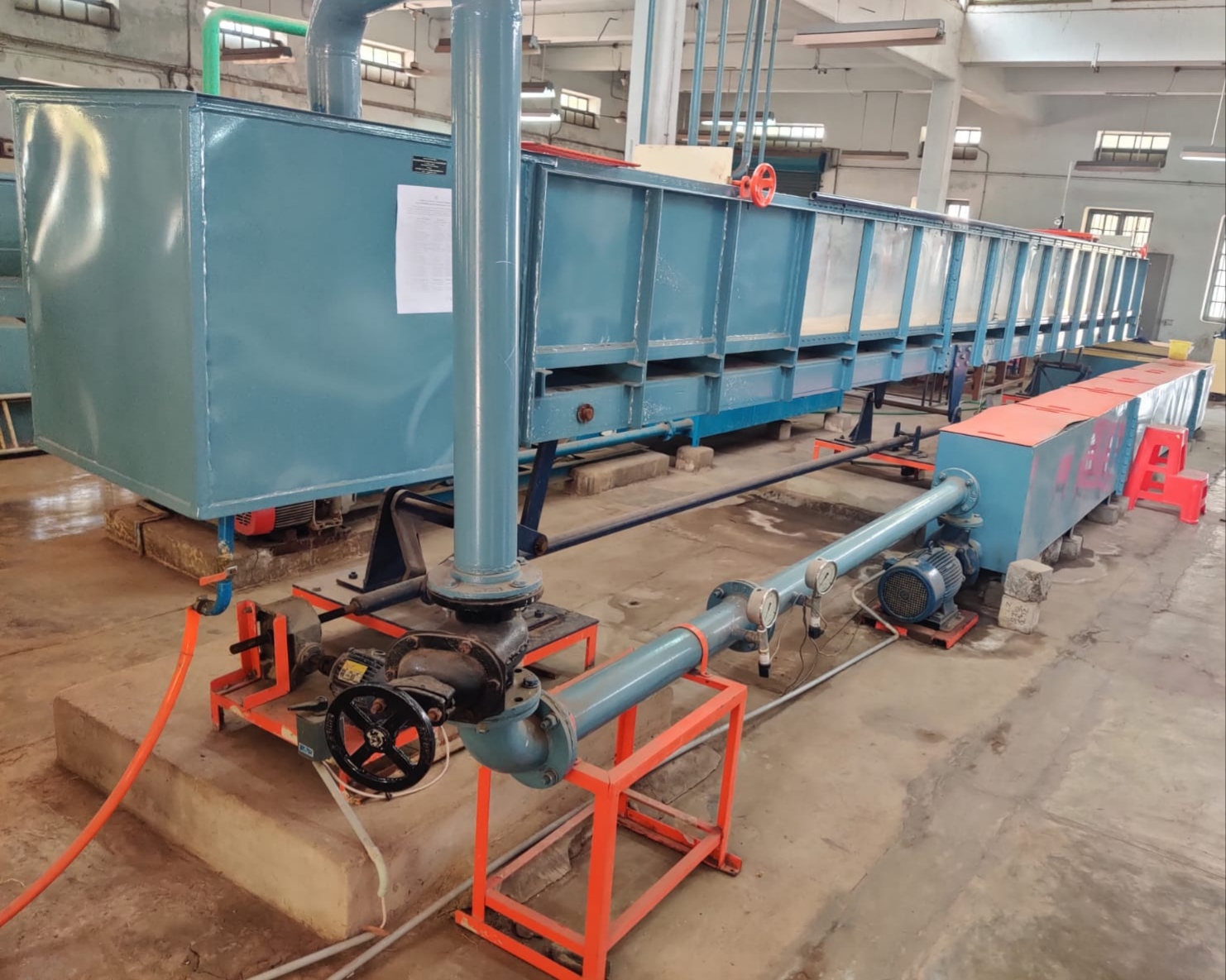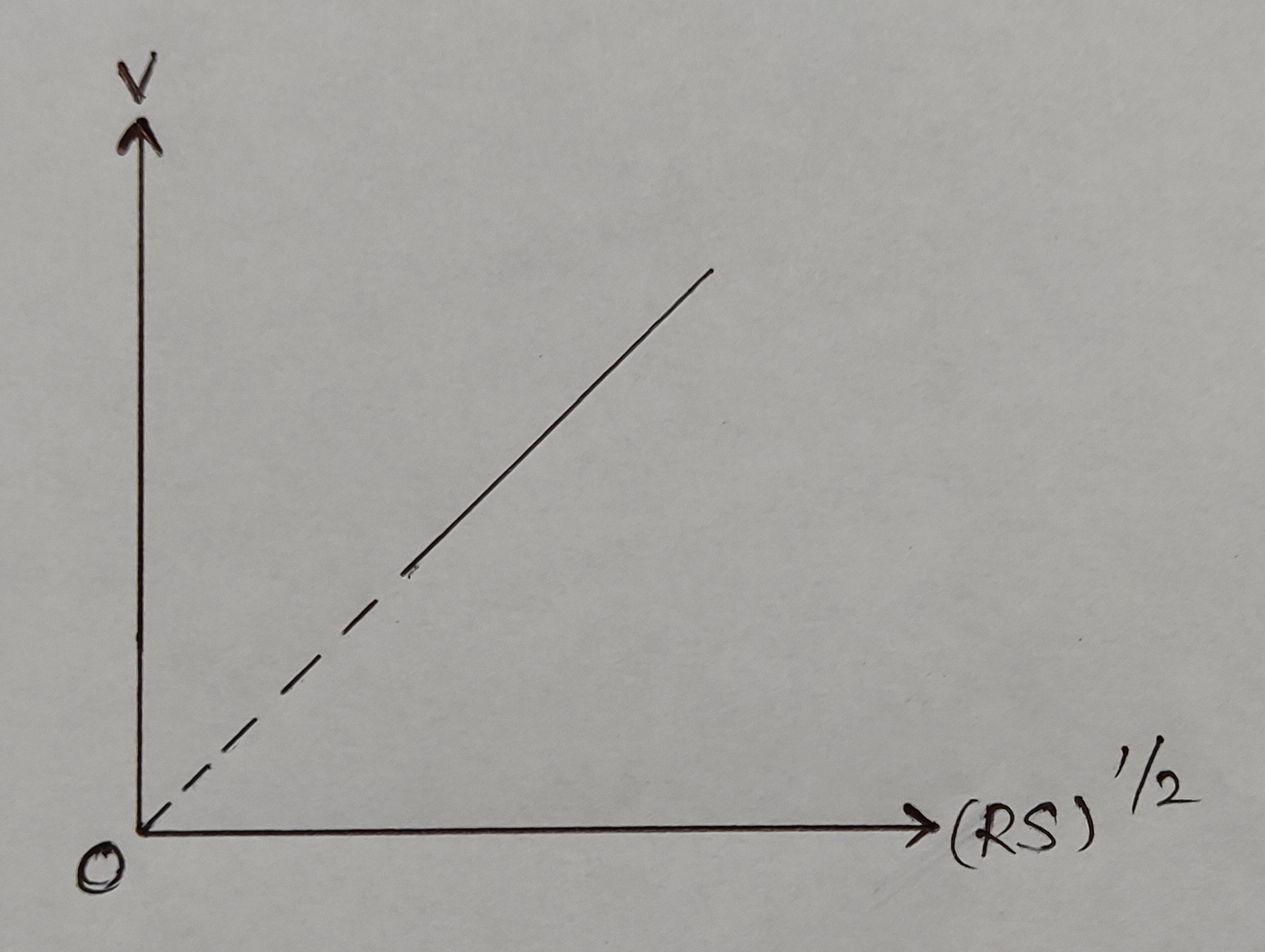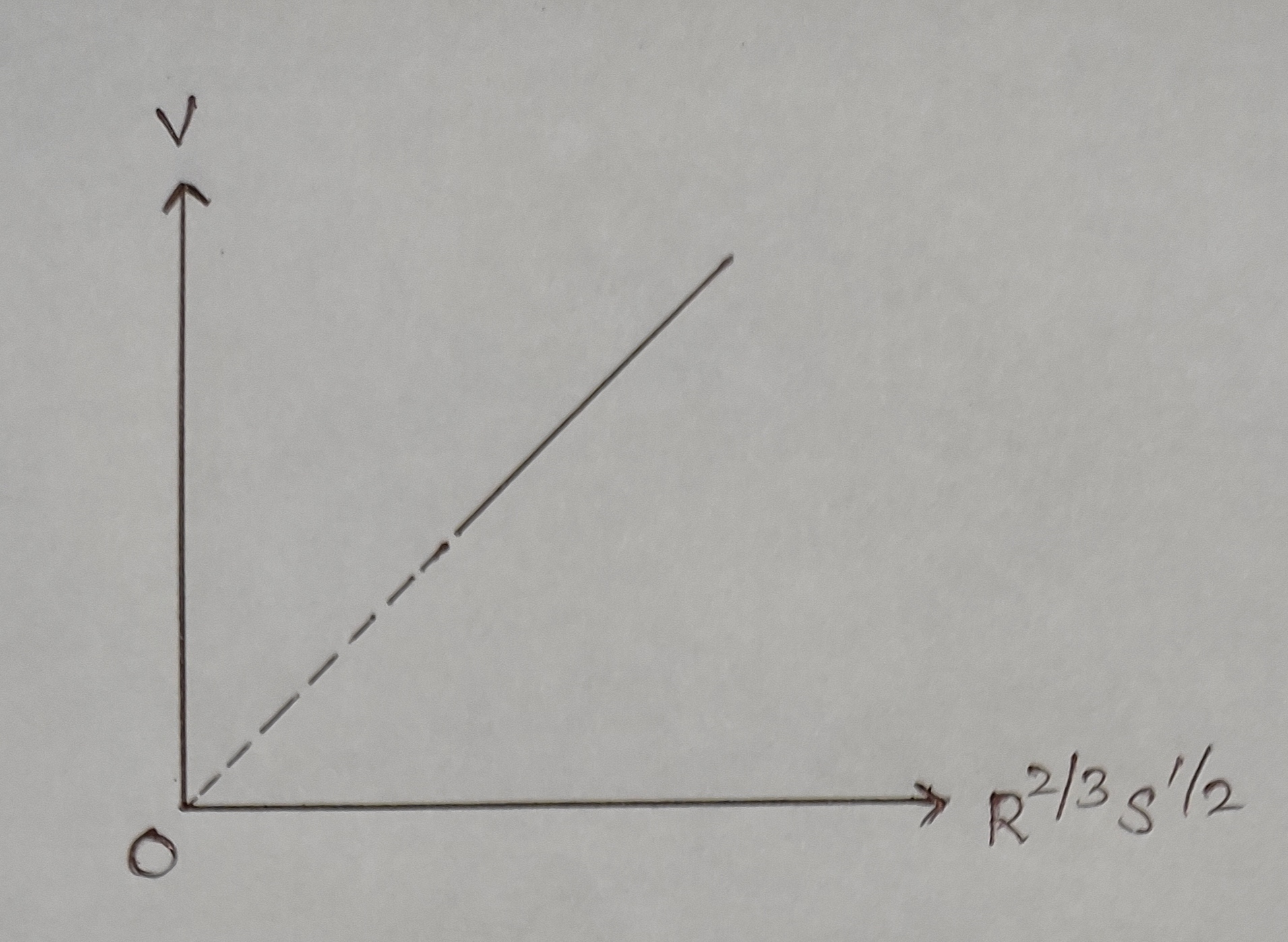Aim:
To determine the Chezy’s coefficient and Manning’s coefficient of the laboratory flume.
Apparatus:
1. 6 m x 0.5 m x 0.5 m Tilting flume
2. Pointer gauge
Formulae:
1. Manning’s coefficient, ` n = \frac{R^{\frac{2}{3}}s^{\frac{1}{2}}}{v}`
2. Chezy's constant, ` c = \frac{v}{\sqrt{RS}}`
where,
S = Longitudinal bed slope
v = Velocity of flow in m/sec = Q/A
R = Hydraulic mean radius in m = A/P
Q = Discharge in m3/sec `= \frac{C_{d}a_{1}a_{2}\sqrt{2gH}}{\sqrt{a_{1}^{2}-a_{2}^{2}}}`
A = Area of flow in m2 = B(y)
P = Wetted perimeter in m = B+2(y)
Cd = Coefficient of discharge of orificmeter
a1 = Cross-sectional area of the pipeline in m2 = `\frac{\pi d_{1}^{2}}{4}`
a2 = Cross-sectional area at throat in orificemeter in m2 = `\frac{\pi d_{2}^{2}}{4}`
d1 = Diameter of the pipeline in m
d2 = Throat diameter of the orficemeter in m
x = Difference in pressure gauge readings in kg/cm2 = p1 - p2
h = Head difference between throat and inlet in orificemeter in m = 10(x)
p1 = Pressure gauge reading at the inlet section in kg/cm2
p2 = Pressure gauge reading at the throat of orificemeter in kg/cm2
B = width of the flume in m
y = Average depth of flow in flume in m = `\frac{(W.L.R_{s}-B.L.R_{s})+(W.L.R_{m}-B.L.R_{m})+(W.L.R_{e}-B.L.R_{e})}{300}`
B.L.Rs = Pointer gauge reading measured at bed level at starting point of flume in cm
W.L.Rs = Pointer gauge reading measured at water level at starting point of flume in cm
B.L.Rm = Pointer gauge reading measured at bed level at mid point of flume in cm
W.L.Rm = Pointer gauge reading measured at water level at mid point of flume in cm
B.L.Re = Pointer gauge reading measured at bed level at ending point of flume in cm
W.L.Re = Pointer gauge reading measured at water level at ending point of flume in cm
Theory:
When water flows in an open channel, resistance is offered to it which results in loss of energy. The resistance encountered by the flowing water is generally counter-acted by the components of the gravity force acting on the body of the water in the direction of motion. If the resistances is balanced by the gravity forces, a uniform flow will be developed when the other physical factors of the channel are unchanged, the magnitude of the resistance depends upon the velocity of the flow. When water enters the channel ,the velocity and resistance are smaller than the gravity forces, which result in an accelerating flow in the upstream reach of the channel. The velocity and resistance increases gradually until a balance between the resistance and gravity forces is reached.
From this point onwards, the flow becomes uniform. The two mostly used equations relating the velocity of steady uniform open channel flow with hydraulic properties of the channel are Chezy’s formula and Manning’s formula.
Procedure:
1. Allow the water supply in to the flume by opening the valve of the inlet pipe.
2. Let the flow become study and uniform in the flume.
3. Measure the depth of the bed level of the flume and water surface level at starting point, mid point and end point of the channel formed inside the flume with pointer gauge mounted on top of rails.
4. Note down the readings of pressure gauges connected to the inlet section and throat section of orificemeter inside the pipe.
5. Note the dimensions of tilting flume and slope of the channel bed.
Observations:
Length of the flume, L = ........... m
Width of the flume, B = .......... m
Depth of the flume, D = .......... m
Inlet diameter of the orifice, d1 = .......... m
Throat diameter of the orificemeter, d2 = .......... m
Least count of the pointer gauge, L.C = .......... cm
Longitudinal slope of the bed, s = ..........
Coefficient of discharge of the orificemeter, Cd = ..........
Table:
| SNo. |
p1 (kg/cm2) |
p2 (kg/cm2) |
B.L.R (cm) |
W.L.R (cm) |
x (m) |
h (m) |
Q (m3/sec) |
y (m) |
A (m2) |
P (m) |
R (m) |
v (m/sec) |
C | n |
|---|---|---|---|---|---|---|---|---|---|---|---|---|---|---|
| 1 | ||||||||||||||
| 2 | ||||||||||||||
| 3 |
Graphs:
1. v Vs (RS)1/2:
2. v Vs R2/3S1/2:
Precautions:
1. Sufficient time should be given for the flow to become steady-uniform.
2. While measuring the water surface level of the flow in the flume, the pointer gauge should touch the free water surface.
3. Note down the pointer gauge readings and pressure gauge readings carefully.
Result:
1. Manning’s coefficient of open channel flow corresponding to the laboratory flume,
a) Average of the tabulated values = ..........
b) From v vs R2/3S1/2 graph = ..........
2. Chezy’s coefficient of open channel flow corresponding to the laboratory flume,
a) Average of the tabulated values = ..........
b) From v vs (RS)1/2 graph = ..........